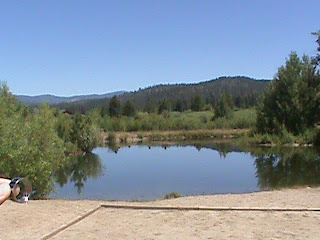
Succession is a term used to describe how a community evolves over time. There are two types of succession, primary and secondary. The photo above is of primary succession. It starts out as rocks then evolves into small plants to grasses to pines and eventually larger and larger trees. There wasn't a fire or a different disaster so it is not secondary succession. Fires, earthquakes, hurricanes are secondary. Primary is where no life turns into a increasing amount of life. It is like a sequence of events over a period of hundreds of years, like the after effects of a volcano erupting.
















































